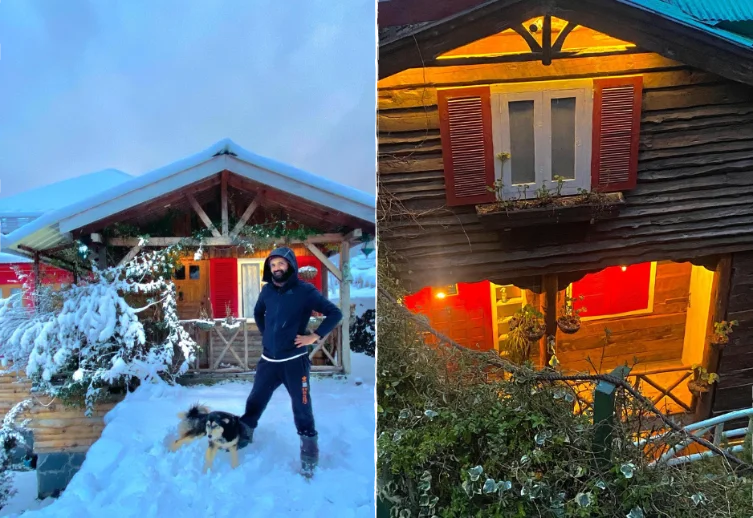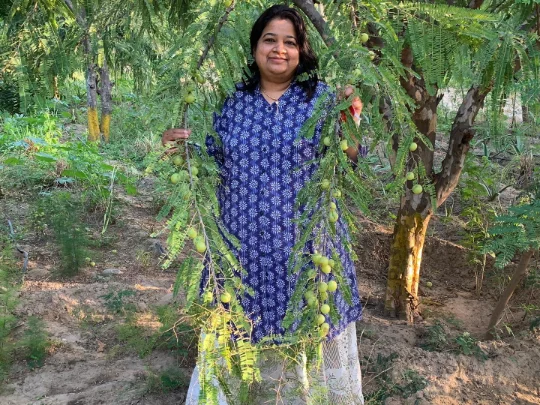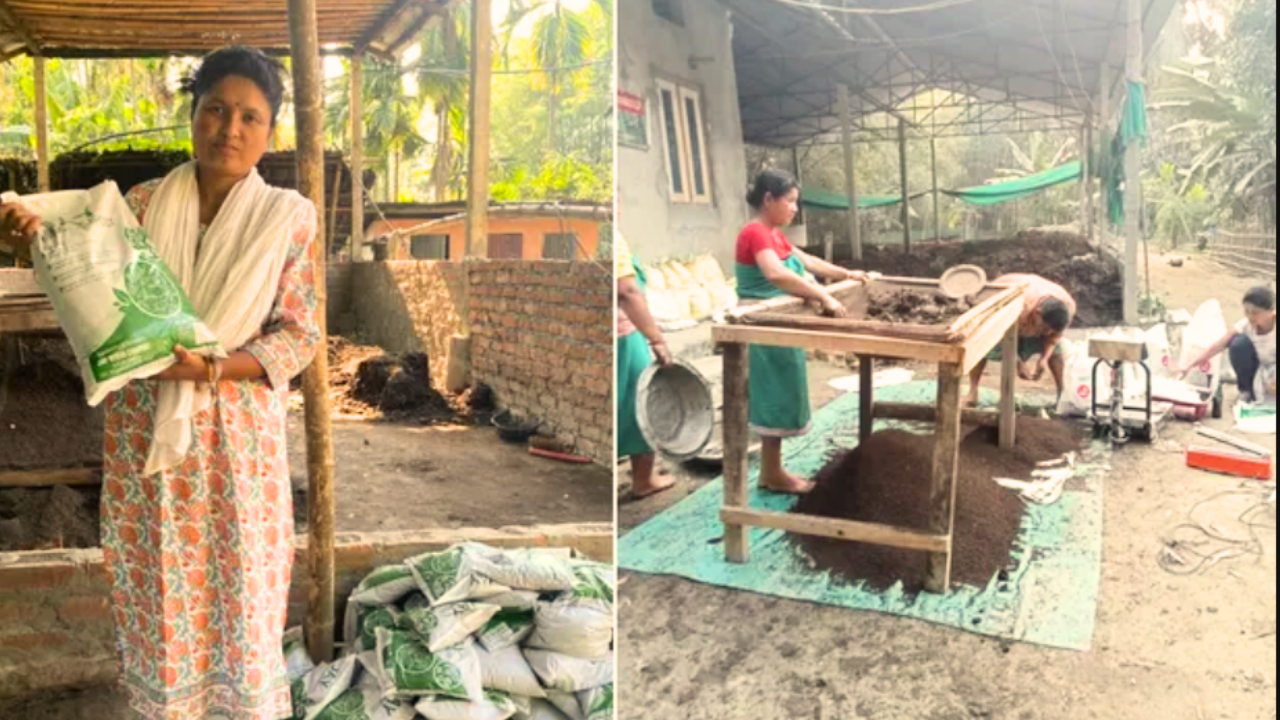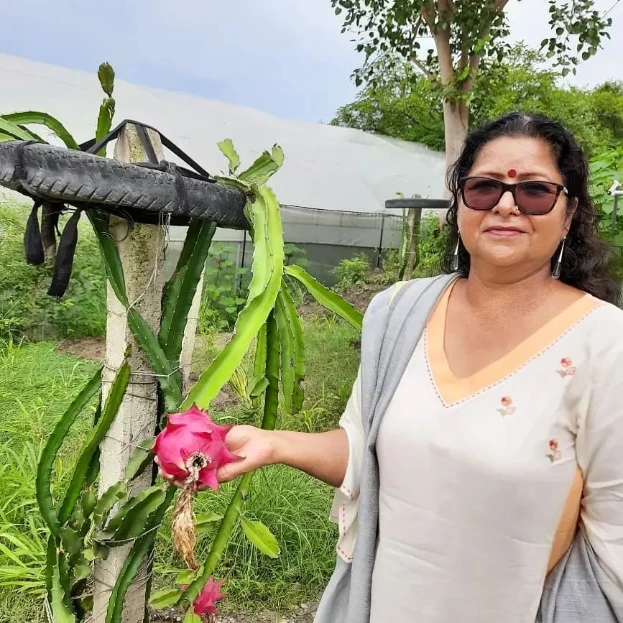Sanjay Austa, a journalist specializing in writing about travel, culture, and art, never imagined that he would become the subject of a story after spending 15 years covering those topics. In a conversation with The Better India, Sanjay, who hails from Himachal Pradesh, reveals that his deep affection for nature and the local community has always guided his choices.
His passion led him to create ‘Meen Bagh Homes’ in 2017, an endeavor focused on promoting eco-friendly travel. This unique destination offers urban dwellers the opportunity to experience life in a traditional Himachali dwelling, surrounded by vast fruit orchards and sprawling farms, all beautifully illuminated by the Himachal sunset.
Following the COVID-19 pandemic, there has been a noticeable surge in the number of homestays cropping up in the state. This shift is driven by people’s growing preference for comfortable environments, homemade meals, and a chance to live like the locals. According to an official mentioned in Tribune India, by December 2019, there were over 2,000 registered homestays in Himachal Pradesh.
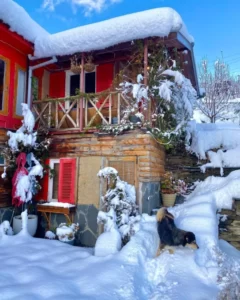
In the midst of intense competition, Sanjay has managed to strike a balance between luxury and authenticity. How did he achieve this? “I learned directly from the local community,” he explains.
Traveling to and from Shimla and Delhi
Any local from the mountains will share with you that the attraction of a bustling city life can’t compare to the comforting embrace of the hills. Sanjay’s story echoes this sentiment. His early years were marked by attending a boarding school in Shimla and spending summers amidst his family’s orchards, making those memories truly cherished. These recollections accompanied him throughout his global travels as a journalist and writer.
Living and working in Delhi, Sanjay felt a deep longing for the hills and the tranquility they offered. The fast-paced city environment didn’t align with his preferences, which became evident after a few years in the capital.
“Delhi eventually pushes you away,” he realized. Looking back, he now believes that if individuals have the chance to contribute to their hometowns, they should seize it. Migrating to cities en masse only exacerbates pollution, traffic, and chaos.
This very notion guided his journey to establish Meena Bagh Homes on his family’s ancestral land in Himachal.
Sanjay’s desire to return to the hills was fueled by his yearning for a connection with nature. In 2017, he made the move back to Himachal and encountered an unexpected twist of fate.
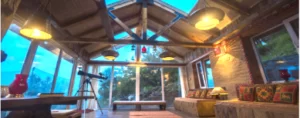
Sanjay reveals a backstory dating back 70 years. “My grandfather constructed a building in the same region that eventually became the renowned apple belt of Himachal. While the orchards thrived, the building fell into disrepair over the years. My father intended to demolish it and replace it with a modern house.”
It was during this crossroads that Sanjay entered the scene with an intriguing proposition. “The structure my grandfather built followed the traditional Kumaoni style, and I believed it could attract tourists. My parents were uncertain about the potential I saw in the house since Ratnari wasn’t initially a tourist hotspot; rather, it was more of an offbeat destination.”
He further explains that after extensive discussions, “I managed to convince them to let me give it a try.”
Preparing to embark on realizing a dream
The idea of creating Meena Bagh Homes was born from Sanjay’s experiences during his travels.
For instance, during a trip to Finland, where he ventured to the Arctic Circle, Sanjay vividly remembers feeling extremely cold. Despite the freezing temperatures outside, the houses he visited were remarkably warm and cozy, even without heaters! Baffled by this, Sanjay inquired how the locals achieved this warmth.
“They told me it’s ‘insulation’,” Sanjay explains. “Insulation keeps the heat inside the home and maintains its warmth.” He promptly drew parallels between this approach and the situation back in his hometown, Shimla. “In Himachal, nearly all homes lack insulation and rely on firewood and electricity for heating. If we adopted insulation, we could prevent heat from escaping.”
Also Read: How They Transformed Ancestral Land into an Enchanting Monsoon Haven: The Story of Mohraan Farms

Thus, when he embarked on his passion project, Sanjay committed to following sensible and sustainable practices seen worldwide.
When working on his two Meena Bagh properties — one in Ratari and another in Shimla — Sanjay’s initial focus was on the foundational walls. “I built around the existing walls using kath kuni architecture. It’s a traditional method employing alternating layers of wood and stone, held together without mortar. Our ancestors were familiar with this technique.”

He adds, “Walls are a part of the area’s architectural history, reflecting its cultural essence.”
As Sanjay worked on transforming his ancestral home into an eco-friendly homestay, he aimed to infuse every corner with the essence of Himachal Pradesh. “I wanted everything to convey a story.”
Today, Meena Bagh Homes takes pride in its sustainable use of recycled wood, sourced from various places by Sanjay. This includes discarded wood often reserved for barbecues and wood collected from factories and mills. Time and again, this wood has proven invaluable, adorning the paneling, flooring, and tables at Meena Bagh with its exquisite charm.
Sanjay has a story about when he collected wood. He noticed that many old British-style buildings, which were common in Shimla, were being torn down to make room for new ones.
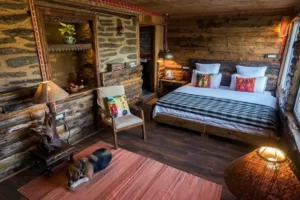
One important building that was being demolished was a hundred-year-old girls’ college in Shimla. “During that period, I required wood to build two fresh cottages at Meena Bagh Homes.” The wood ended up serving a different role, and Sanjay discovered what he describes as “textured beauty.”
Sanjay made a few other changes to the homestay. He added well-insulated bathrooms so guests who had traveled a long way could have a hot bath. Even though some people in Himachal believe water is a luxury, Sanjay thinks differently.
“People think water is a luxury because they don’t collect it,” he explains. He mentions that his water collection system can hold up to two lakh liters of water because of the heavy rainfall they get in the state.
The rain also benefits Sanjay’s thriving kitchen garden. It’s filled with common items like tomatoes, potatoes, herbs, spices, peas, lettuce, as well as more unusual ones like raspberries, strawberries, apricots, and plums. This garden is like Sanjay’s personal paradise.
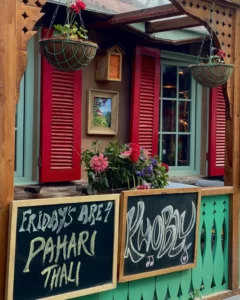
His concern for nature also shows in how he made sure the garden was truly sustainable, not just on paper.
“Imagine you’re in a remote place, far from the city. How do you get things like broccoli? Probably from Shimla, which might get it from Delhi, which might get it from Hyderabad, and so on.”
“But how is this process really sustainable?”
Sanjay got curious about how people today often label things as sustainable without making sure they truly are. That’s why he decided to move away from the “organic farming” way of doing things. Instead, he embraced something called permaculture. This lets him grow a bunch of different foods, making sure he gets most of what he needs from his own land. This way, he’s not just relying on the market’s idea of “sustainability.”
A guest named Alim Chandani visited Meena Bagh Homes in July 2021 and said, “The best thing about this place is all the little details. It feels really cozy and just like home, plus the homemade food is delicious.” The rooms start at Rs 3,900.
If you thought those were good reasons to come here on your next vacation, wait until you hear the best part.
Sanjay has always loved astronomy, and he got a really big telescope (people say it’s the biggest private one you can have). He did this when he found out that the skies in Ratnari are ranked second on something called the Bortle Scale (it measures how bright the night sky is).
Guests really enjoy using the telescope on clear nights to look at Jupiter, Saturn, and even things like nebulae.
And while they do that, Sanjay, the travel journalist, is right there with them. He’s living the dreams he used to write about.
Book your stay here

